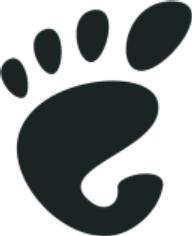 
|
|
|
Users with Disabilities Get Built-in Assistive Technology Solutions with the GNOME 2.0 DesktopNew developments make the GNOME 2.0 Desktop more accessible to the needs of users with disabilities. New York, N.Y. January 28, 2002 - The GNOME Foundation today announced the latest innovative assistive technology contributions to the GNOME project, an open-source, free-software desktop for GNU/Linux and UNIX. BAUM Retec AG delivers the first full-featured GNOME screen magnifier, a screen reader, and a set of Braille drivers to meet the needs of vision-impaired users and the Adaptive Technology Resource Centre, University of Toronto is delivering the first GNOME on-screen keyboard to support users with motor impairments. These built-in assistive technologies seamlessly integrate with a new generation of accessible applications as they enable users with disabilities to easily interact with applications that can adapt to their needs. These new assistive technologies leverage Sun Microsystems, Inc.'s contribution of the GNOME Accessibility Framework. This framework based on an open architecture, provides a comprehensive toolkit and APIs, that developers can use to create accessible applications and interface them with assistive technologies on any UNIX or GNU/Linux platform running the GNOME 2.0 desktop. With the combination of the Accessibility Framework and assistive technologies, users with disabilities have the solutions they need to get their job done efficiently:
"Integrating accessibility technology solutions with the GNOME desktop allows anyone to use GNOME," said Miguel de Icaza, GNOME Foundation President. These built-in capabilities provide enterprises with a ready-to-go and comprehensive accessible desktop that adapts to the needs of users with disabilities. The benefits are vast - for IT organizations this cost-effective alternative resolves the problem of buying and installing expensive complex software; for disabled users it's simpler and more convenient to work and collaborate with team members since they have the advantage of using any UNIX or GNU/Linux platform running the GNOME 2.0 desktop". "We chose GNOME because of its open, extensible, and comprehensive accessibility architecture," said Thomas Friehoff, CTO, head of software development of BAUM Retec AG. "Using the open Assistive Technologies Service Provider API we were able to deliver our solutions quickly, because it eliminated the need to reinvent assistive technology software for different UNIX platforms, saving us time and costs". "Our center in Toronto specializes in developing information technologies that include seamless accessible interfaces," said Jutta Treviranus, Director, Adaptive Technology Resource Centre, University of Toronto. "The GNOME Accessibility Framework free software project enables us to leverage the component-based architecture to develop technologies that intelligently integrate alternative access techniques. Using this approach we will make the user interface accessible and usable by the large group of individuals who cannot use a standard keyboard or mouse. We will continue working with the GNOME open source project to develop new kinds of user input support, including an open source keyboard configuration editor that provides ways to improve the efficiency of computer interaction for users with disabilities." "By providing rich and consistent interfaces for both assistive technologies and applications, the accessibility framework enables flexible and comprehensive accessibility solutions for GNOME," said Bill Haneman, GNOME Accessibility Architect, Sun Microsystems, Inc. "A key aspect of the GNOME Accessibility Framework is support for user interface component sets beyond the built-in GNOME component set," said Peter Korn, Sun Accessibility Architect. "The thousands of applications that take advantage of the Java Accessibility API will work with the GNOME Accessibility Framework unaltered and gain the benefit of the assistive technologies included with the GNOME 2.0 Desktop. In addition, other important applications, such as the OpenOffice.org productivity suite, are being modified to use these technologies."
Availability Baum Retec AG assistive technologies are available at: http://developer.gnome.org/projects/gap/AT ATRC, University of Toronto assistive technology is available at: http://developer.gnome.org/projects/gap/AT
About GNOME
About the GNOME Foundation
About BAUM Retec AG
About Adaptive Technology Resource Centre (ATRC), University of Toronto
About Sun Microsystems, Inc. |
|
|